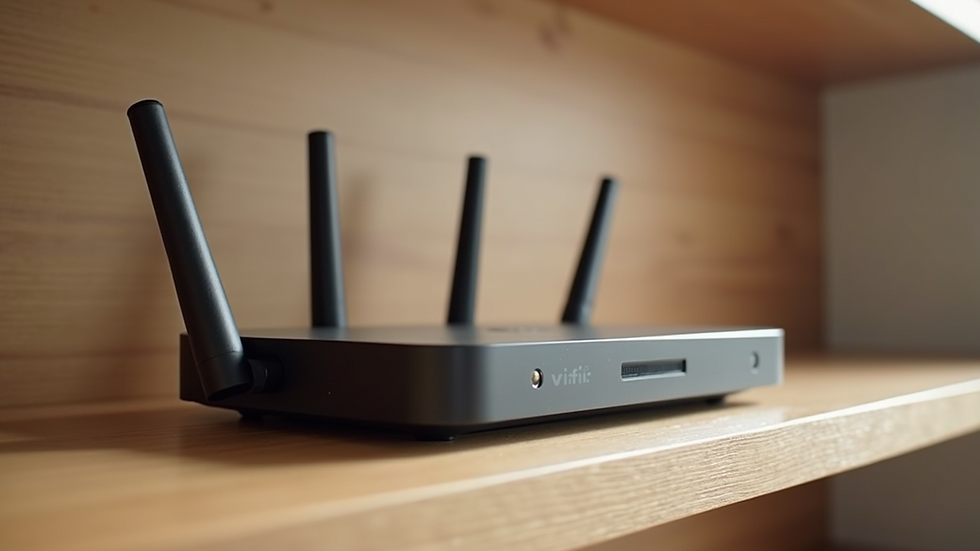Understanding Telecommunication Services for Australians
- Annalise Beinke
- Sep 3, 2025
- 4 min read
When it comes to staying connected, whether at home or in business, having reliable communication service solutions is essential. In South Australia, the demand for fast, affordable, and trustworthy connections is growing every day. I want to share what I’ve learned about these services and how they can help you stay connected without hassle.
What Are Communication Service Solutions?
Communication service solutions cover a range of technologies and services that allow people and businesses to communicate effectively. This includes phone lines, internet connections, mobile networks, and more. These solutions are designed to meet different needs, from simple home internet to complex business networks.
For example, a homeowner might need a stable internet connection for streaming and working from home. Meanwhile, a business might require a more robust system that supports multiple phone lines, video conferencing, and cloud services. The right communication service solution depends on your specific needs and location.
Choosing the right provider is also important. A local expert can offer personalised advice and quick support. This is why many in South Australia turn to companies like SimTech Telecommunications Pty Ltd, who focus on delivering reliable and affordable services tailored to the region.

Exploring Communication Service Solutions in South Australia
South Australia has unique challenges and opportunities when it comes to communication services. The geography can affect signal strength and internet speeds, especially in rural areas. That’s why local providers often invest in infrastructure that suits the region’s needs.
Communication service solutions here include:
NBN (National Broadband Network): The main internet service for homes and businesses, offering various speed tiers.
Mobile Networks: 4G and 5G services that provide wireless internet and phone connectivity.
Fixed Wireless: An option for areas where cable or fibre is not available.
Business Phone Systems: Including VoIP (Voice over Internet Protocol) for cost-effective calls.
Understanding these options helps you make informed decisions. For instance, if you run a business in a regional town, fixed wireless might be a better choice than fibre due to availability. On the other hand, urban homes often benefit from fibre connections for faster speeds.
When selecting a communication service solution, consider:
Speed Requirements: What activities will you use the connection for? Streaming, video calls, or large file transfers need higher speeds.
Reliability: Look for providers with good local support and minimal downtime.
Cost: Balance your budget with the features you need.
Scalability: For businesses, ensure the solution can grow with your needs.

What are the three types of telecommunication?
Telecommunication can be broken down into three main types, each serving different communication needs:
Wired Communication: This includes traditional phone lines, fibre optic cables, and coaxial cables. Wired connections are known for their stability and speed. Fibre optic cables, in particular, offer very high-speed internet and are becoming more common in South Australia.
Wireless Communication: This type uses radio waves to transmit data. Mobile networks (like 4G and 5G) and Wi-Fi are examples. Wireless communication is flexible and convenient, especially for mobile devices and areas where laying cables is difficult.
Satellite Communication: This involves sending signals to and from satellites orbiting the Earth. It’s useful in remote or rural areas where other types of connections are not available. Satellite internet can be slower and more expensive but is improving with new technology.
Each type has its pros and cons. For example, wired connections usually offer better speed and reliability but can be costly to install. Wireless is easier to set up but may face interference or coverage issues. Satellite is a good backup or last resort for hard-to-reach places.
Understanding these types helps you choose the best communication service solution for your location and needs.

How to Choose the Right Provider for Your Needs
Choosing the right provider is just as important as choosing the right technology. Here are some tips to help you make the best choice:
Check Local Reviews: Look for providers with strong reputations in South Australia. Local experience means they understand the area’s challenges.
Compare Plans: Don’t just go for the cheapest option. Look at speed, data limits, and contract terms.
Ask About Support: Good customer service can save you time and frustration.
Look for Bundles: Some providers offer packages that include internet, phone, and TV services, which can save money.
Consider Future Needs: If you plan to expand your business or add smart home devices, choose a provider that can scale with you.
For example, SimTech Telecommunications Pty Ltd offers tailored solutions with a focus on fast and reliable service. They understand South Australian needs and provide ongoing support to keep you connected.
Tips for Maintaining a Reliable Connection
Once you have your communication service solution set up, keeping it running smoothly is key. Here are some practical tips:
Regularly Restart Your Modem: This can clear temporary issues and improve speed.
Secure Your Network: Use strong passwords to prevent unauthorized access.
Update Equipment: Older routers and modems may not support the latest speeds.
Monitor Usage: Keep an eye on data limits to avoid extra charges.
Contact Support Early: If you notice slow speeds or outages, reach out to your provider quickly.
By following these steps, you can enjoy a stable and fast connection that supports your daily activities.
Staying Connected with Confidence
In today’s world, staying connected is more important than ever. Whether you’re working from home, running a business, or just keeping in touch with family, the right communication service solution makes all the difference.
If you want to explore your options or need expert advice, consider reaching out to local providers who know South Australia well. They can help you find the best fit for your needs and budget.
For those looking for reliable and affordable options, I recommend checking out telecommunication services from trusted local experts. They focus on keeping homes and businesses connected with fast, affordable, and trustworthy service.
By understanding your options and choosing wisely, you can enjoy seamless communication every day.
I hope this guide helps you feel more confident about your communication service choices. Remember, the right solution is out there, and with a little research, you can find one that keeps you connected without stress.
%20(6)%20(1).png)



Comments